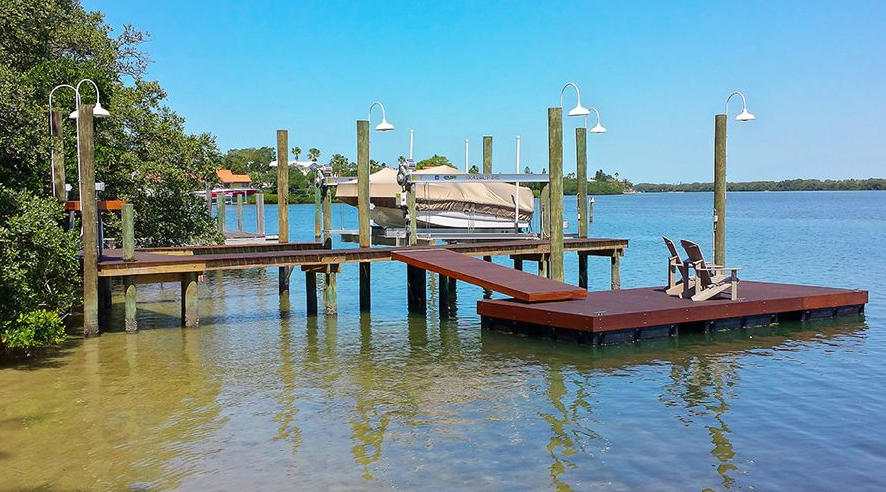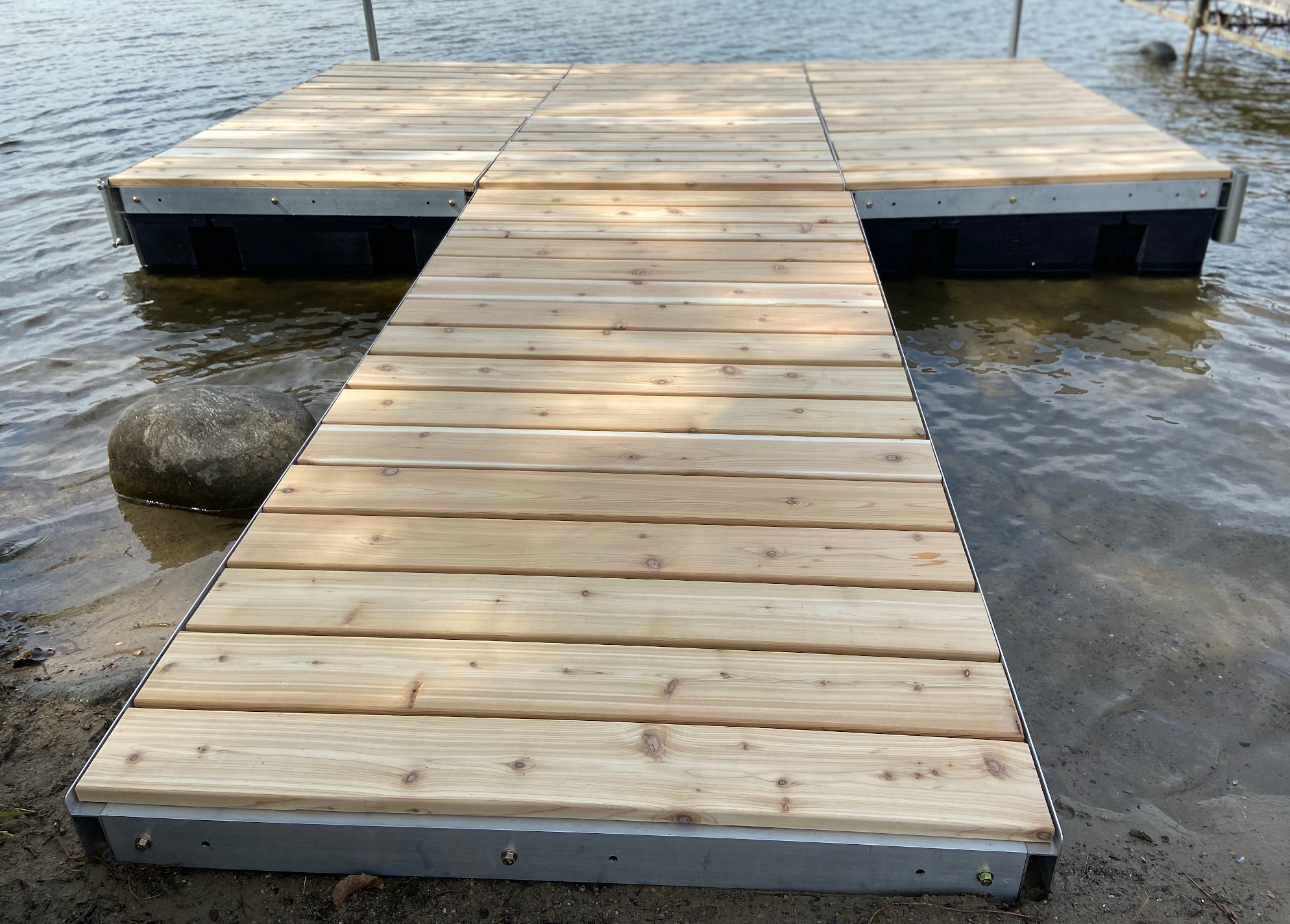Navigating the Options: Choosing the Right Dock Company for Your Floating Dock Task
Navigating the Options: Choosing the Right Dock Company for Your Floating Dock Task
Blog Article
Floating Docks: The Ideal Option for Versatile Water Gain Access To
Floating docks existing a compelling solution for a selection of water accessibility needs, using flexibility that goes beyond conventional mooring alternatives. The modular nature of floating docks promotes customization, catering to particular needs.
Benefits of Floating Docks
Floating docks offer numerous advantages that boost water accessibility for different applications. Their ability to fall and increase with changing water degrees makes them particularly beneficial in settings with rising and fall trends or seasonal variations. This flexibility makes sure that vessels can easily moor without concern for the water's depth, giving a reputable system for leisure, business, and commercial uses.
Furthermore, floating docks are typically built from long lasting materials that stand up to deterioration, making them appropriate for lasting usage in aquatic settings. Their setup is usually less invasive than conventional fixed docks, reducing the environmental effect and promoting quicker deployment (floating docks). This adaptability enables much easier moving or reconfiguration according to user demands or ecological adjustments
Security is an additional key advantage; floating docks can provide steady accessibility for people disembarking or boarding from watercrafts and minimize the risk of mishaps related to unpredictable surfaces. Additionally, they can be developed to suit a variety of devices, such as fenders and cleats, enhancing performance. Overall, floating docks represent a reliable remedy for enhancing water gain access to throughout varied sectors while advertising safety and environmental sustainability.

Sorts Of Floating Docks
Various kinds of floating docks provide to various requirements and settings, each developed with specific attributes to enhance performance. The most typical types include modular docks, which include interlacing areas that enable very easy personalization and expansion. These docks are excellent for recreational usage, as they can be tailored to fit various watercraft sizes and water conditions.
One more preferred option is the stationary floating dock, which remains anchored in position yet floats with transforming water levels. dock company. This type is especially matched for locations with very little tidal changes, supplying stable gain access to for fishing or swimming. In addition, there are drive-on docks, which include a sloped style that permits watercrafts to easily drive on and off, making them ideal for personal watercraft and smaller sized vessels
For commercial applications, durable floating docks are readily available, created from enhanced materials to withstand substantial tons and severe aquatic settings. Last but not least, eco-friendly floating docks make use of lasting products and layouts to minimize ecological impact, usually incorporating features like vegetation to sustain regional wildlife. Recognizing the different kinds of floating docks ensures that individuals can select one of the most ideal solution for their certain requirements.
Setup Process Introduction
A successful setup of floating docks requires mindful planning and attention to detail to guarantee ideal performance and safety. The preliminary action includes evaluating the site conditions, consisting of water depth, present, and possible challenges. This evaluation notifies the selection of the suitable dock materials and layout customized to the details environment.
Next, getting needed licenses is vital, as several jurisdictions have guidelines concerning building and construction on water bodies. Once permissions are safeguarded, the setup can continue. Begin by preparing the structure, which might include anchoring systems or pilings customized to the dock type and neighborhood conditions.
Following the foundation configuration, assemble the dock sections according to manufacturer specifications. Guarantee that all parts are safely fastened and lined up to endure environmental tensions. Setting the dock in the marked area, guaranteeing it is level and steady.

Upkeep Tips and Finest Practices
After the installment procedure is total, recurring upkeep plays an essential role in making certain the longevity and functionality of floating docks. Routine evaluations should be performed to recognize any kind of signs of damages, deterioration, or wear - floating docks. Check for any type of loose fittings, cracks, or separation in the dock areas, as these can compromise structural integrity
Cleaning up the dock is important to get rid of particles, algae, and various other accumulation that can impact its appearance and security. Utilize a mild stress clean periodically to maintain sanitation without triggering damages to the surface. Furthermore, using a protective sealer every couple of years can aid boost long life and resist ecological wear.
Take notice of the mooring lines and anchors, guaranteeing they are protected and complimentary from deterioration. Change any kind of degraded parts quickly to prevent hazards. Seasonal changes may additionally be necessary; during severe weather, rearranging or reinforcing the dock can prevent damages.
Applications for Floating Docks
Floating docks serve a have a peek at this site plethora of applications, accommodating both recreational and business demands. In recreational settings, they offer smooth access to rivers for tasks such as boating, fishing, and swimming. Their flexible nature permits setup in varying water degrees, ensuring secure and secure access no matter tidal changes.
Readily, floating docks are indispensable for marinas and beachfront companies. They facilitate the docking of vessels, enabling reliable discharging and loading of items. Their modular design enables very easy expansion or reconfiguration to fit altering company needs, making them ideal for watercraft services, excursion operations, or angling charters.
Furthermore, floating docks are used in environmental applications such as water research and habitat reconstruction. They can serve as systems for scientific researches, keeping track of water quality, or conducting wild animals surveys without disturbing sensitive ecological communities.
In commercial contexts, floating docks are used in building and construction jobs, offering access to hard-to-reach locations for tools and personnel. Their versatility, longevity, and very little influence on the setting make them an optimal choice for a wide variety of applications, enhancing both capability and availability in various water-based settings.
Conclusion
In verdict, floating docks stand for an optimal option for varied water gain access to needs, owing to their versatility, durability, and modular design. Floating docks serve as a valuable property for i thought about this recreational, commercial, and environmental projects, ensuring reliable accessibility to waterways and advertising lasting methods in water atmospheres.
Floating docks existing a compelling option for a range of water gain access to requires, offering convenience that transcends typical mooring options.Floating docks offer numerous benefits that boost water accessibility for numerous applications. In general, floating docks stand for an efficient remedy for enhancing water gain access to image source across diverse industries while promoting safety and security and environmental sustainability.
Another preferred alternative is the stationary floating dock, which remains secured in location but drifts with changing water degrees.In final thought, floating docks stand for an optimum service for diverse water gain access to needs, owing to their versatility, longevity, and modular style.
Report this page